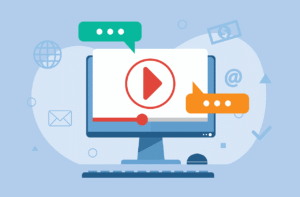
Social media, has expanded over the last few decades, fermenting slowly at first, then growing and evolving into a global network impacting how we share, learn, and connect.
Growing up, my great uncle gifted us a computer. At the risk of aging myself, I will say that to operate this computer you needed to enter simple code. While it was initially exciting, I easily lost interest watching my eldest brother enter DOS commands. Later, we would have dial up internet and between navigating when one could use the computer and the slow connection I rarely used a computer until university. As friendships developed, I experimented with Messenger, but often found online communication challenging. Even to this day, with the ease of apps like WhatsApp,TikTok and Snapchat to message I sometimes find it challenging to keep in touch with friends and family online, and probably have faded into obscurity. Initially, social media was not woven into my daily life, a computer or cell phone was useful, but not necessary, and most of my life and connections were still built offline.
Eventually as social media grew, my consumption also grew. Over time many of the platforms I accessed increasingly became monetized, driven by influencers and often saturated with divisive and polarized viewpoints. I often feel frustrated, overwhelmed, and anxious after accessing social media sites such as Facebook, YouTube, Threads, Reddit, X (formerly Twitter), AppleNews Top Stories as a distraction or without intention. I recognize that much of the time when I do access social media it is also when I am already taxed from day-to-day interactions. Doomscrolling, highlight reels, algorithms that amplify, notifications, likes, followers, and toxic comments can lead to information and emotional overload.
I’ve had phases of purposeful social media use that by contrast remind me that it is empowering to create, share and connect. When I worked in arts and culture, I was expected to use Twitter and LinkedIn to build identity and community. I contributed content and connected with others professionally online in my role at the arts and heritage centre. I was actively involved in a national network of art gallery educators that shared strategies, exchanged ideas, and collaborated online.
In my teaching career by contrast, I’ve rarely stepped into professional conversations online, partly because I’ve always felt cautious about what should or shouldn’t be shared about teaching in public spaces. I am excited about this course and diving into social medias place in education. I want to approach using social media with intention to cultivate meaningful connections. I would like to grow my ability to use social media as a tool for learning, teaching and networking.